
French postcard in the Les Vedettes de Cinéma series by A.N., Paris, no. 102. Photo: P. Nadar. Vanni Marcoux in Le Miracle des Loups / Miracle of the Wolves (Raymond Bernard, 1924).

French postcard by Cinémagazine-Edition, Paris, no. 422. Photo: Pierre Blanchar in Le joueur d’échecs / The Chess Player (Raymond Bernard, 1927).

Vintage postcard for the Al Film Co., Batavia-Centrum (former Dutch East Indies, now Indonesia), no. T. 93. Photo: R. Tomarig, Nice. Édith Jéhanne in Tarakanova (Raymond Bernard, 1930). This picture was also used for posters and magazine covers.

French postcard by A.N., Paris, no. 936. Photo: Pathé Natan. Harry Baur as Jean Valjean in Les Misérables (Raymond Bernard, 1934).
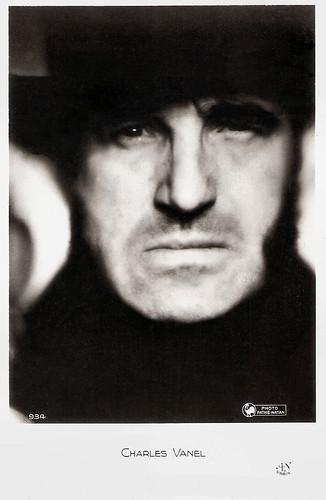
French postcard by A.N., Paris, no. 934. Photo: Pathé Natan. Charles Vanel as Javert in Les Misérables (Raymond Bernard, 1934).
Adapting plays written by his father
Raymond Bernard was born in Paris in 1891. He was the second son of the famous French writer and playwright Tristan Bernard and his wife, Suzanne Rébecca Bomsel. His older brother was the playwright Jean-Jacques Bernard, and his younger brother was the Resistance doctor Étienne Bernard.
He studied drama at the age of fifteen and began his career as an actor, appearing on stage in plays written by his father. In his father's play 'Jeanne Doré' (1913), he acted alongside Sarah Bernhardt. His part was written especially for him by his father. In August 1914, when the First World War broke out, he was mobilised, but was wounded twice and demobilised in June 1915. His film career began in 1915, when he acted alongside Sarah Bernhardt in the film adaptation of his father's play, Jeanne Doré (Louis Mercanton, René Hervil, 1916).
In 1916 or 1917, Bernard started working behind the camera at Gaumont as an assistant to director Jacques Feyder. Raymond Bernard completed the filming of Le ravin sans fond (1917) when Feyder was called to serve at the front during World War I. In Le ravin sans fond (Jacques Feyder, Raymond Bernard, 1917), Georges Tréville starred as a wealthy Count, a passionate mountaineer, who has made a will in favour of his goddaughter. His niece and her husband decide to kill him and force him to fall into a ravine. But six months later, the Count reappears, repaying everyone.
Le ravin sans fond was an adaptation of a novel by Tristan Bernard. When Raymond continued as a director, he primarily focused on adapting plays written by his father. His next films included Le traitement du hoquet (1918) with Armand Bernard, and Le petit café (1919) starring Max Linder and Armand Bernard.
In such popular entertainment films as Le secret de Rosette Lambert (1920) starring Lois Meredith and Triplepatte (1922), Raymond Bernard gained experience working with leading performers such as Charles Dullin and the young Albert Préjean.

French postcard. Yvonne Sergyl in the French silent film Le Miracle des Loups / The Miracle of the Wolves (Raymond Bernard, 1924).
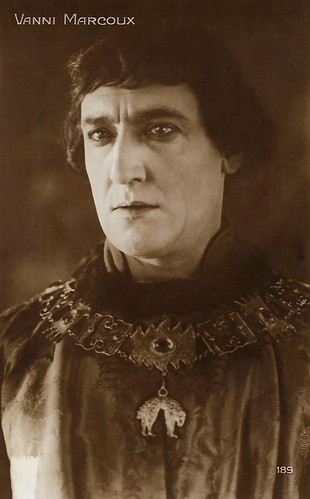
French postcard by Cinémagazine-Edition, no. 189. Vanni Marcoux as Charles le Téméraire (Charles the Bold) in the French silent film Le Miracle des Loups / The Miracle of the Wolves (Raymond Bernard, 1924).

French postcard by Cinémagazine-Edition, no. 421. Photo: Édith Jéhanne in Le joueur d'échecs / The Chess Player (Raymond Bernard, 1927). The story takes place in 18th-century Poland and Russia.

French postcard by Cinémagazine-Edition, Paris, no. 349. Photo: Charles Dullin in Le joueur d'échecs / The Chess Player (Raymond Bernard, 1927).

German postcard by Ross Verlag, no. 4299/1, 1929-1930. Photo: D.L.S-Rosenfeld-Film. Olaf Fjord as Count Orlof in Tarakanova (Raymond Bernard, 1930).
A new style of film
In 1924, Raymond Bernard embarked upon a new style of film, the historical spectacle. He founded the Société des Grands Films Historiques with the writers Henry Dupuis-Mazuel and Jean-José Frappa. Their first production was Le Miracle des loups / The Miracle of the Wolves, set in 15th-century France during the reign of Louis XI. The leading role of King Louis XI in the film based on Henry Dupuy-Mazuel was played by Charles Dullin. The film contained spectacular battle scenes shot at Carcassonne. Le Miracle des loups proved to be the most expensive film of its day and one of the more profitable.
Bernard's ability to combine dramatic narrative with spacious settings and large numbers of performers was utilised in the two other silent, lavish, large-scale productions, Le Joueur d'échecs / The Chess Player (1927) with Pierre Blanchar and Charles Dullin, and Tarakanova (1930) starring Edith Jéhanne and Rudolf Klein-Rogge. It depicts the life of Princess Tarakanoff, the pretender to the throne of Catherine II in Eighteenth Century Russia.
Raymond Bernard joined Pathé-Nathan in 1931 and made his sound film debut. His film career in the sound era continued for nearly three decades. Further large-scale productions included his film about the First World War, Les Croix de bois / The Wooden Crosses (1932), and a three-part adaptation of Victor Hugo's Les Misérables (1934), which was nearly five hours in length. It is the greatest adaptation of the novel, due to its in-depth development of the themes and characters, in comparison with most shorter adaptations. Pathé-Natan went bankrupt in 1934.
In his later films, he returned to modest projects and budgets, including a number of sophisticated comedies. After Antoine de Saint-Exupéry, Bernard directed Anne-Marie (1936) with Annabella in the title role as a young, aspiring pilot. At the end of the 1930s, he made the successful Spy film Marthe Richard au Service de la France / Marthe Richard (1937) with Edwige Feuillère and Erich von Stroheim, Les Otages / The Mayor's Dilemma (1939) with Annie Vernay and Cavalcade d'amour / Love Cavalcade (1940) with Claude Dauphin and Michel Simon. The films were set against the backdrop of the aggressive war mood in Europe. During the Second World War, he went into hiding in the Vercors. As a Jew, his father was interned in the Drancy camp and his nephew, François-René, son of his brother Jean-Jacques Bernard, was deported to Mauthausen, where he died. It was in memory of this period, and as a tribute to the people who helped him, that he made the film Un ami viendra ce soir / A Friend Will Come Tonight (1946) with Michel Simon and Madeleine Sologne.
Bernard retired from filmmaking in 1958. In the 1970s, when he was in his 80s, he could supervise the reconstruction of Les Misérables, which had been severely truncated in the 1940s for easier distribution. In 1977, shortly after the broadcast of a nearly complete version on French television, Bernard died in Paris at age 86. He was married to Jeanne Salley from 1940 till his death in 1977. He is buried in the Montmartre cemetery. Raymond Bernard was an Officer of the Legion of Honour.
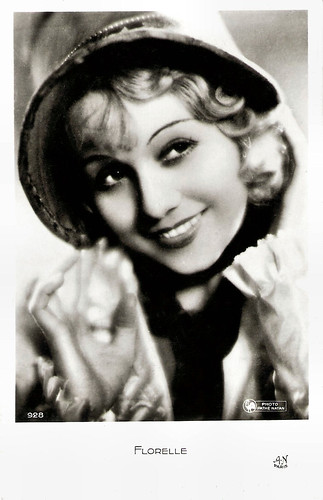
French postcard by A.N., Paris, no. 928. Photo: Pathé-Natan. Florelle as Fantine in Les Misérables (Raymond Bernard, 1934).

French postcard by A.N., Paris, no. 930. Photo: Pathé Natan. Orane Demazis as Eponine in Les Misérables (Raymond Bernard, 1934).

French postcard by A.N., Paris, no. 931. Photo Pathé Natan. Emile Génevois as Gavroche in Les Misérables (Raymond Bernard, 1934).
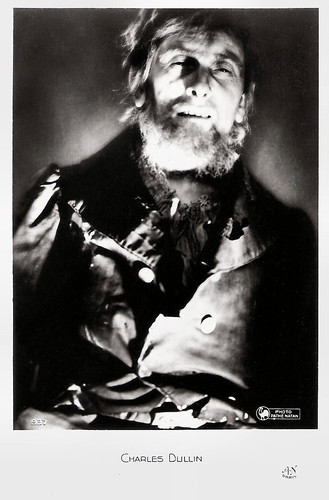
French postcard by A.N., Paris, no. 937. Photo: Pathé Natan. Charles Dullin as the evil Thénardier in Les Misérables (Raymond Bernard, 1934).
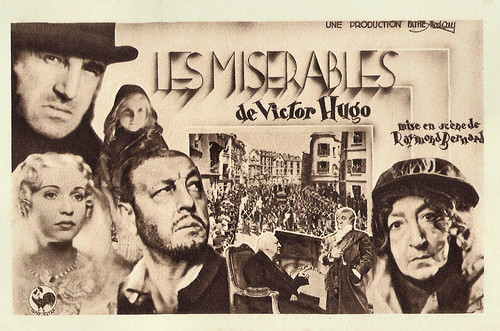
French postcard by A. Breger, Frères, Paris. Photo: Pathé Natan. In the centre: Harry Baur as Jean Valjean in Les Misérables (Raymond Bernard, 1934).
Sources: Wikipedia (English, German and French) and IMDb.
No comments:
Post a Comment